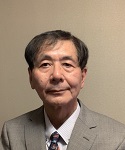| Biography | |
|---|---|
 Mr Yoshihiro Sawada Japan CCS Co. Ltd., Japan |
|
| Title: Technology – Lessons learned from Tomakomai CCS Project of Japan and looking ahead | |
| Abstract: Carbon dioxide capture and storage (CCS) is the only technology that contributes both to reducing emissions in the power and industry sectors directly and to removing CO₂ to balance emissions that cannot be avoided –an essential technology to achieve “net zero” goals. Twenty-six CCS projects are in operation worldwide. Most of them are projects where CO₂ is injected into oil-bearing formations to enhance oil production (CO₂-EOR), and as a result, CO₂ is stored in the subsurface. Five projects are dedicated geological storage (DGS) projects that do not aim to enhance oil production but to storage CO₂ in the subsurface. In Asia, a DGS CCS project injected 10,000 tons of CO₂ in an onshore subsurface formation in Nagaoka, Japan from 2003 to 2004, and 300,000 tons of CO₂ was injected in an onshore subsurface formation in the Ordos Basin in China from 2011 to 2015. From 2016 to 2019, 300,000 tons of CO₂ were injected into a sub-seabed formation in Tomakomai, Japan. Japan CCS has successfully operated the Tomakomai full-chain CCS system, demonstrating its safety and reliability. The project is being carried out not far from the center of Tomakomai City, with a population of 170,000, and extensive public engagement activities are being carried out. Our public engagement program has been largely successful, with no major opposition to the project. We would like to stress the importance of information disclosure and diligent efforts to secure the understanding of local stakeholders. The onshore to offshore injection scheme saved drilling cost and avoided disturbing the local livelihood. We have dispelled concerns about earthquakes. In our response to earthquakes, we learned that it was important to respond as quickly as possible, and to include technical data to minimize concerns. The capture system achieved world class performance in energy efficiency. Looking ahead in Japan, feasibility studies of carbon recycling and CO₂ ship transportation are in progress. | |
| Biography: Joining Japan CCS in 2010, Mr. Yoshihiro Sawada was responsible for the management of a feasibility study (FS), the front-end engineering and design (FEED), and engineering, procurement and construction (EPC) as well as the commissioning and operation of the Tomakomai CCS demonstration project facility. He served as Executive Managing Director and President of the Plant Division between 2015 and 2017, and has served as Corporate Adviser and General Manager of the International Affairs Department since 2017. He is currently working to share information and learnings from the Tomakomai CCS demonstration project internationally and to collaborate with overseas CCS organizations with a view to accelerate the deployment of CCS. Between 2004 and 2009, he was with Japan Continental Shelf Survey Corp., with the mission to extend the outer limits of the continental shelf of Japan, serving as president between 2007 and 2009. The surveys conducted by this organization provided important data for the recommendation of the extension of the continental shelf of Japan. The expanded area was equivalent to more than 80% of its land area. Prior to this, he was involved in research, engineering, sales and construction of offshore structures and pipelines at Nippon Steel Corp., which he joined in 1977. He has worked as a project manager or a project engineer for various offshore development projects, including offshore oil and gas development projects, offshore airport construction projects, large breakwater construction projects, marine bridge construction projects and offshore pipeline construction projects. Mr. Sawada holds a Master of Science (Civil Engineering) from the University of Tokyo and University of New York, and a Bachelor (Civil Engineering) from the University of Tokyo and is a certified Professional Engineer of Japan in Civil Engineering and Engineering Management. | |
